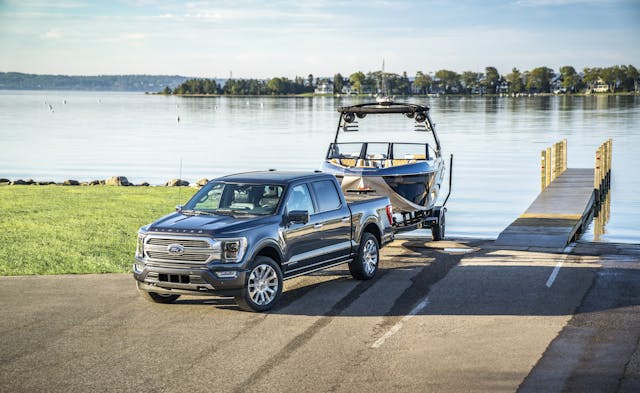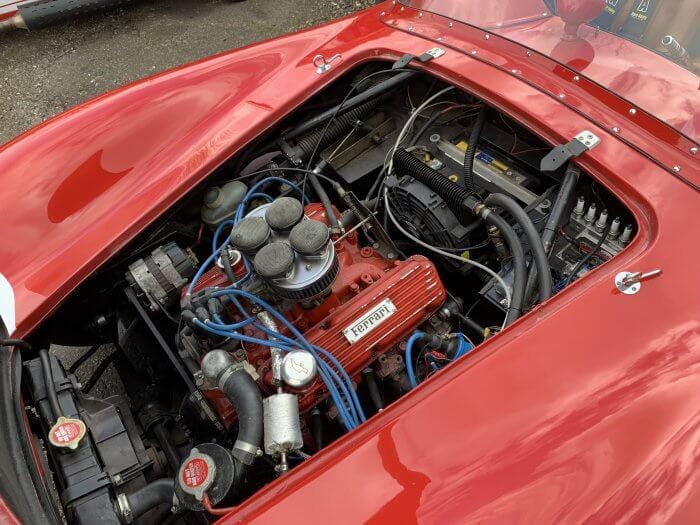Media | Articles
Aftermarket sales clear 2019 levels, 650K Fords wiped by recall, Cobb gets serious about CARB
Aftermarket sales defy high inflation, fuel prices to pass pre-pandemic levels
Intake: SEMA, the Speciality Equipment Market Association, reports that the automotive aftermarket is flying high even in the face of rising inflation and fuel prices, as 75 percent of manufacturers, 68 percent of distributors and 53 percent of retailers/installers report that sales are above their 2019 levels. (The average increase is 18, 7, and 6 percent, respectively, for each business vertical.) As expected, the lion’s share of sales come from trucks (20 percent for manufacturers, 22 percent for retailers) and classic vehicles (18 percent manufacturer, 26 percent retail). The overall growth trend is expected to continue in the coming months, which is great news for customers and insiders alike.
Exhaust: While SEMA believes that the pandemic’s reign of disruption has subsided, it warns that global supply chain issues are still a challenge for over 90 percent of the industry, and the light at the end of the tunnel may not come until 2023. And much like other industries, 70 percent of manufacturers, 56 percent of distributors, and 45 percent of retailers experienced difficulty finding qualified people to fill open positions. While the data doesn’t raise any red flags, remember that SEMA surveyed 1554 individuals within the specialty-equipment industry for this report. So as the saying goes, your mileage may vary.
IndyCar comes home for first of many Indy 500 test sessions

Intake: Earlier this week, the NTT IndyCar Series drivers took to the Indianapolis Motor Speedway for their first test sessions ahead of the 106th running of the Indianapolis 500. In preparation for “The Greatest Spectacle in Racing,” drivers spent Wednesday and Thursday turning laps around the famed 2.5-mile course. Wednesday was broken into multiple sessions, with veteran groups and hopeful rookie contenders practicing separately. These initial sessions were marked by drama, as multiple crashes slowed the typically torrid pace. Many of the yellows were caused by spins on the pit exit lane—a section of track that was resealed over the off-season. The slick access road was such an issue for drivers that officials halted the first day 30 minutes early so they could inspect the new surface. Indy’s second day was delayed four hours to dry the surface after overnight rain. Once dry, the track hosted the fastest laps over the two-day period, with Joseph Newgarden laying down a chart-topping 229.519 mile-per-hour lap.
Exhaust: Indianapolis Motor Speedway is alive with the sound of open-wheel racing, signaling to all motorsport fans that Spring is officially here. While prospective rookies are typically the source of shattered fiberglass in the months leading up to the Indy 500, this year it was a crop of veterans who found themselves pointed in the wrong direction. Four-time Indy 500 winner Helio Castroneves, centennial winner Alexander Rossi, and previous series champ Will Power all spun during Wednesday’s tumultuous sessions. Power’s incident (shown below) also collected rising star Colton Herta. All drivers walked away and only Castroneves’ team opted to withdraw from the second day of testing. Rejoice! Before we know it, it’s gonna be May.
A driver’s worst nightmare is spinning up off the apron into 220mph traffic.. Didn’t see this one coming.. glad no one was hurt. pic.twitter.com/YrYjJFcUyP
— Will Power (@12WillPower) April 21, 2022
Marketplace
Buy and sell classics with confidence
Ford recalls 652,996 body-on-frame trucks and SUVs for faulty wiper arm

Intake: Ford is recalling several hundred thousand body-on-frame pickups and SUVs for a potentially faulty wiper arm that could result in reduced visibility in adverse weather and increased risk of an accident. According to the National Highway Traffic and Safety Administration (NHTSA) report, the affected vehicles were equipped with a wiper arm whose head spline teeth were produced out of design spec for the higher-torque wiper motors. Among the cars affected are 66,373 Ford F-150s from the 2021 model year, 89,903 F-150s from 2020, 95,915 Expeditions from 2020 through ’21, 381,797 Super Duty pickups from 2020 through 2022, and 19,008 Lincoln Navigators from 2020 to ’21. Affected owners will be notified by mail and should prepare to take their vehicles to a Ford or Lincoln dealer to have both front windshield wiper arms replaced, free of charge.
Exhaust: Recalls happen—the astounding mechanical complexity of today’s cars are bound to produce a few faulty parts occasionally. Frankly, we’re surprised it isn’t more common. Kudos to Ford for nipping this one in the bud and handling the fix in a timely manner. Blasting along in a rainstorm only to have the front wiper arms decide to take the day off is a less-than-ideal scenario.
On this day in 1933: Sir Henry Royce passes

Intake: Sir Henry Royce, founder of Rolls-Royce with Charles Rolls, died 89 years ago today. Royce spent his final 16 years living at Elmstead, a country manor in West Sussex, some 400 miles from the company’s factory in Derby, and every year Rolls-Royce Enthusiasts’ Club members make a pilgrimage to his former home to pay tribute. Royce had a studio on the estate where he worked on car designs and the engine for the Schneider Trophy-winning Supermarine Spitfire aircraft. “Sir Henry Royce was a wholly remarkable man, with an insatiable curiosity, formidable work ethic and irresistible urge to make things better, whether that was motor cars, engines, or even—as he proved at Elmstead—farm animals and fruit trees. Almost 90 years after his death, he remains a towering figure and constant inspiration to all of us at Rolls-Royce Motor Cars,” says Andrew Ball, head of corporate relations at Rolls-Royce Motor Cars.
Exhaust: When BMW-owned Rolls-Royce was seeking a new base for its HQ, it chose Goodwood for its proximity to Rolls’ home. The West Sussex roads that Rolls himself would test drive prototype vehicles are still used today. “That emotional connection with our founder, who spent his happiest and most productive years there, is something we all feel very deeply,” adds Ball.

A Ferrari 860 Monza for $70,000? Not quite
Intake: A 1956 Ferrari 860 Monza, as driven to victory at Nassau by Phil Hill and that took second and third spots in the Mille Miglia, would set you back millions. Or you could pick up this lookalike for just over $70,000. Its fiberglass bodywork is a decent mimic of the original, and it sits on a tubular steel chassis like the Ferrari, with similar wishbone front suspension and a four-speed manual transmission—but, to be honest, that’s where the similarities end. The Ferrari was powered by a 280-hp, 3.4-liter four-cylinder engine and this Kougar copy has a three-liter Ford V-6 offering 156 hp. That said, the red paint and Ferrari badges on the engine will, no doubt, make it seem much faster. The cabin is trimmed in leather-look vinyl, but at least it has a Moto-Lita steering wheel. Built in 1982 the car is for sale at Caterham specialists Sevens & Classics in the UK.
Exhaust: The last time a Ferrari 860 Monza came up for sale it fetched $2,057,000 at RM Sotheby’s Monterey auction in 2003. With the passage of almost 20 years, the price today would be closer to $7,000,000. Does that make this replica a sweet deal? Possibly …
Nerves struck as Cobb gets serious about CARB compliance

Intake: Cobb, one of the most well-known suppliers of aftermarket tuning software, has received 11 new California Air Resources Board Executive Orders (CARB EO) for new products since January, and its latest changes will affect customers no matter the regulations (or enforcement thereof) in their home states. To bring its Accesstuner Software into compliance with CARB EOs, Cobb has eliminated any table that allows for changes to O2 sensors, catalysts, EGR systems, warmup procedures, secondary air injection, and other systems designed to reduce emissions. Rather than approach the issue of varying emissions regulations by offering a separate, CARB EO–specific tune (as Hondata does), Cobb is instituting one CARB-compliant update to rule all its customers. As of April 18, 2022, all Cobb products running Accesstuner software were force updated to remove anything that a regulation agency might classify as a delete, bypass, or defeat of a factory-installed emissions system. All older software systems are, as of that same date, nonfunctional. Caught in the net are some flex fuel systems, namely the analog units used by Nissan and Subaru.
Exhaust: Cobb is making the right move in the wrong way. In the long run, the company has little choice: The EPA is not messing around, as it proved back in 2020, when it slammed Diesel Brothers with a $848,000 fine for illegally modifying the emissions control systems of diesel pickups. While Cobb’s shouldering of environmental responsibility is worthy of praise, its insensitive delivery of the news is damaging the company’s otherwise excellent name. The discontinuation of the E85 Flex Fuel Kit is triggering the most outrage, since Cobb didn’t give any real warning to clients or distributors, and the kit was available for sale up to 30 days ago. Here, as with the nationwide application of CARB emission standards, Cobb’s approach lacks nuance: Why lock everyone out, and not simply limit access for the E85 kit to Cobb-certified shops?













